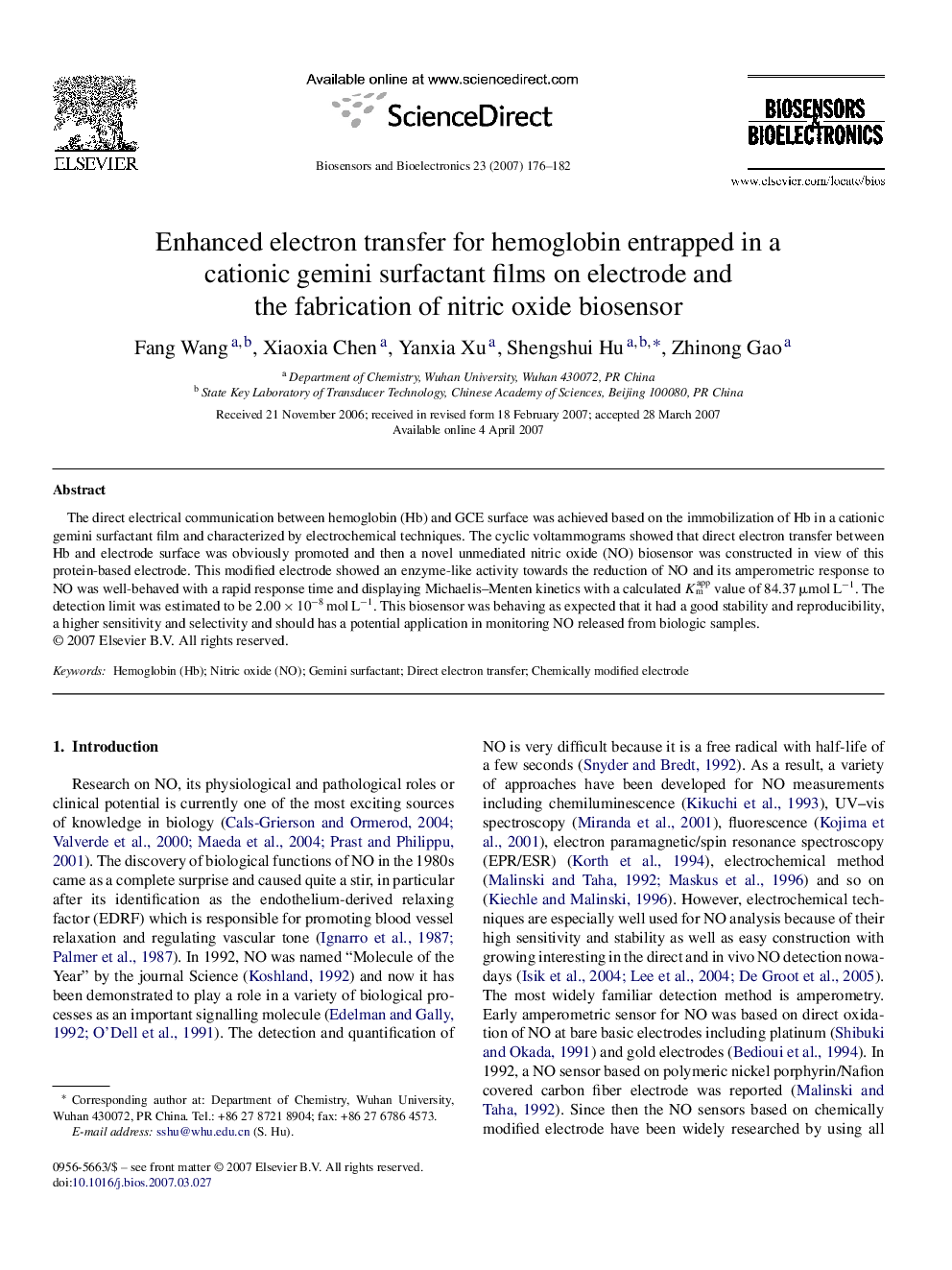| کد مقاله | کد نشریه | سال انتشار | مقاله انگلیسی | نسخه تمام متن |
|---|---|---|---|---|
| 870106 | 909851 | 2007 | 7 صفحه PDF | دانلود رایگان |

The direct electrical communication between hemoglobin (Hb) and GCE surface was achieved based on the immobilization of Hb in a cationic gemini surfactant film and characterized by electrochemical techniques. The cyclic voltammograms showed that direct electron transfer between Hb and electrode surface was obviously promoted and then a novel unmediated nitric oxide (NO) biosensor was constructed in view of this protein-based electrode. This modified electrode showed an enzyme-like activity towards the reduction of NO and its amperometric response to NO was well-behaved with a rapid response time and displaying Michaelis–Menten kinetics with a calculated Kmapp value of 84.37 μmol L−1. The detection limit was estimated to be 2.00 × 10−8 mol L−1. This biosensor was behaving as expected that it had a good stability and reproducibility, a higher sensitivity and selectivity and should has a potential application in monitoring NO released from biologic samples.
Journal: Biosensors and Bioelectronics - Volume 23, Issue 2, 30 September 2007, Pages 176–182